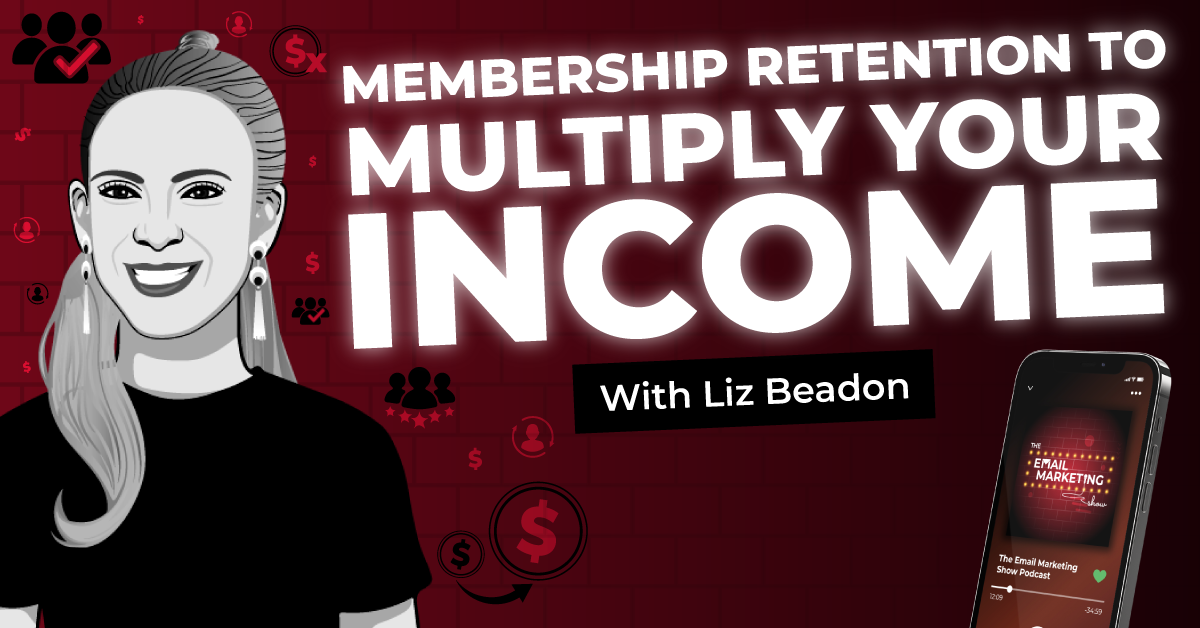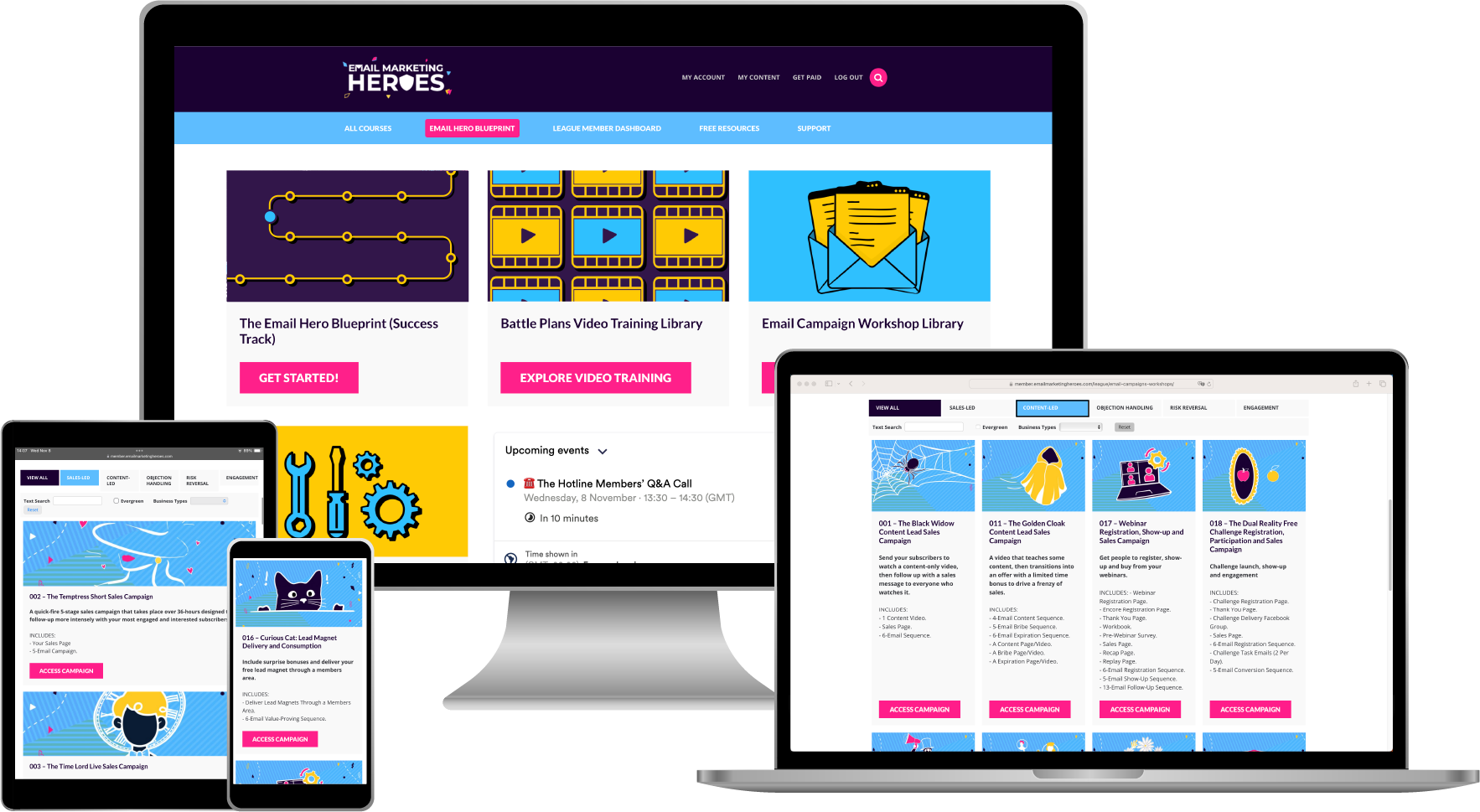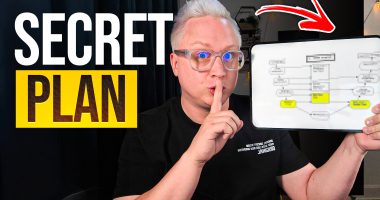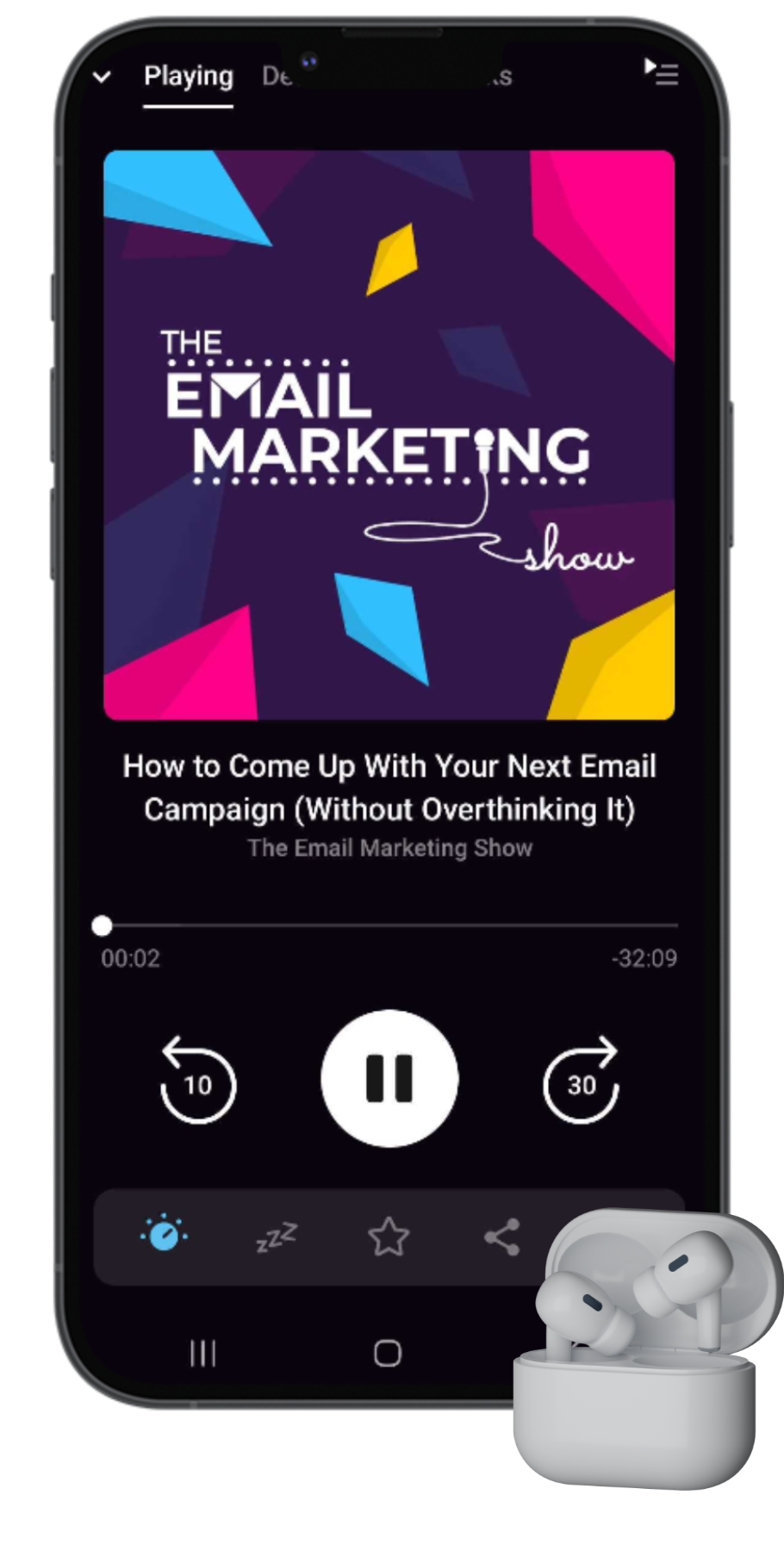
Why Retention is Important for your Membership, with Liz Beadon
Ever wondered why retention is important in your membership? If you're focusing all your energy on acquiring new members, you want to know what our friend Liz Beadon has to say. Having worked with big brands like Virgin and Samsung, Liz is a retention and loyalty strategist. She works with membership and subscription site owners to help them improve their customer experience and retention rate and to grow their business.
If you don't have a retention strategy just yet, you definitely want to know about Liz's framework (it's full of R's!)
Ready?
SOME EPISODE HIGHLIGHTS: (3:20) Did Liz meet her husband the day she spilled a drink on him at the theatre? (4:53) Why is retention important for your membership? (6:45) How do you know if you have a retention problem? (8:20) Does retention play a part in your onboarding experience? (10:42) Step 1 - Receive. (13:36) Step 2 - Reveal. (16:32) Step 3 - Refer. (20:12) Step 4 - Report. (22:14) Step 5 - Review. (25:30) Subject line of the week with Liz Beadon.
Why is retention important for your membership?
Running a membership is a great business model – you have lovely members who pay you every month and a regular income.
But none of it is possible if you don't nurture your customer relationships. Because when you have a membership site (or any kind of subscription service) retention is key for profitability and revenue.
When do you start nurturing loyalty in your membership?
If you want to get technical, the process of nurturing loyalty starts with your acquisition methods. You need to make sure you're acquiring the right kind of members.
But in terms of nurturing the relationship, this includes everything from the sales process to that first impression when they hit your membership site and see the welcome area. Liz calls it “a bit of an orchestra of experience to deliver that great first touch”. We love that.
How do you know if you have a retention problem?
A lot of membership site owner will mostly focus on the acquisition of new members. But not many know whether they have a high turnover of members. Do you know how many people, month-on-month, leave your membership and cancel their subscription?
There are two different ways that you can look at this.
- Your monthly churn, i.e. what percentage of your members leaves every month.
- Or (and Liz thinks this is more valuable) your cancellation rate, which is calculated by working out the percentage of people who are still there on month 1, month 2, etc. This gives you a great idea of when you might be seeing an increase in churn and tells you whether you have a retention issue at a specific part of the lifecycle.
Of course, if you find you're losing more members than you are acquiring, you probably need to shift gears and focus on your retention strategies.

The Top 10 Books To 'Power Up' Your Email Marketing
10 book recommendations that will improve all areas of your email marketing (including some underground treasures that we stumbled upon which have been game-changing for us).
Does retention play a part in your onboarding experience?
When people first join it’s important to create a really good experience so they feel they're being guided through a process. However, you want to be careful not to overwhelm your brand new members by sending way too much stuff by email.
You want to properly onboard your members to make sure you're delivering a great experience and at the same time flag anyone who might be at risk of churn. And the best time to do this is right at the start. Because one of the most exciting times of someone joining your membership is the day that they subscribe. But that excitement naturally fatigues over time.
So when onboarding your members, put the most important content at the start of the lifecycle and ensure you deliver a tangible win for your members within the first 2-3 weeks. Because that's the amount of time you have before someone considers cancelling.
Typically, the first month sees a massive cancellation spike, so your first 2-3 weeks are an imperative point of the lifecycle to show the value of your membership. If they don't see value immediately (and either don't use the content or don't understand the membership), they will cancel. This is why thinking about retention in your onboarding process is crucial!
Step 1 – Receive
Liz uses a simple 5-step framework that highlights the checkpoints every membership owner should consider when delivering a best-in-class, memorable onboarding experience.
The first step is Receive. This is all about making sure you're warmly welcoming your members through that initial email, where you include all the key information.
How much information is too much? Keep it as short as it can be but as long as it needs to be. Call out the key elements of the membership, like login details, weekly calls, learning sections, etc.
This is an important step because by reminding your members of the value of your membership, you counteract that buyer's remorse and cognitive dissonance that happens when people realise they’ve just spent money and start worrying they might not get the results they want. By delivering a great first email, you're ‘reselling them' the membership, so they don't regret their purchase.
And on this note, be super clear on what your membership helps people with. People don’t want a programme that does a million different things. They want to be taken on a linear journey and achieve a tangible result.
Step 2 – Reveal
Get clear on what one thing you want to help your members achieve in the first 2-3 weeks of their membership. That first month is key to ensuring you're not haemorrhaging members so stop people from leaving because they're not getting what they need out of the membership.
This is where you identify a quick win – something tangible and measurable – that you can help people get in a short period of time and then hold their hand through that process. You can do this via two or three emails where you point them to right resources and encourage them to get involved in the membership and take action.
If you sell a membership that helps people achieve something that's not entirely measurable (like relationships or emotions) think of something your members can do in the first few weeks. It could be helping them ask one person on a date, for example. The aim here is to get your members to acknowledge, from a logical perspective, that they have achieved something tangible as a result of joining your membership.
They haven’t reached the ultimate goal just yet. But in a short span of time they’ve got some value. And that's better than thinking three weeks have passed and they’ve done nothing with the membership.
So do some customer research and ask your members what they wanted to achieve when they joined the membership. And with that, think about the first step on that journey you can help them take in the first few weeks. Make it super easy and bite-sized because analysis paralysis is a real thing – if you give people too much, they will do nothing.
Step 3 – Refer
This is something a lot of memberships don't do. And it's asking new members to refer people who might benefit from the membership. The reason why Liz includes this in the onboarding programmes she helps clients with is because from a revenue perspective, having a referral scheme can be quite lucrative. It's an activity you can set up to run in the background, and it can gain you new members without any additional work.
Liz talks about two kinds of referral programmes:
- You can give people a percentage of the initial sale when they drive a new member into the membership.
- Or, you can give a number of free months to both your existing member and the new person who joins.
By creating a mutual benefit (and specifically through giving the new person something for free), you're making it easier for your existing members to refer people to your membership. Because by offering a freebie to someone they don't feel like they’re selling to their friends!
Liz suggests you do this around week 3 and during the onboarding process because at this point members are still quite engaged and excited, and you want to retain them for as long as you can. But of course, you can also pepper in your referral programme throughout the lifecycle. You could even schedule a campaign every few months to send them a nudge. But that first month is a really great opportunity to drive people in.
Step 4 – Report
This is a touchpoint where you email your members at a specific point in the lifecycle – at day 25, for example. You send them an email and ask them how they're finding the membership. And you give them a couple of options (links) to choose from:
- “Loving it so far”.
- And, “Still getting up to speed”.
Depending on what they click, you then tag them and have a follow up email that corresponds to their answer. If they say they're loving it so far, brilliant! If it's a monthly member, that's a great opportunity to upsell to an annual membership. But if they say that they're still getting up to speed, this is an early indicator that someone isn't getting value from the membership yet, and it's a great opportunity for you to take that conversation off of automated and start manually engaging them to ask if there’s anything you can do to help them.
What this also helps with is seeing patterns. If you get the same sort of feedback a few times, you start building that in to help people automatically in the future so you can improve the customer experience for everyone.
Step 5 – Review
This happens around the day 31-32 mark, after they've been charged for their second month. At this point, you want to reach out and ask your members to leave a testimonial of their experience with the membership. You can even ask some additional questions to find out what's going well vs what you need to improve.
Keep this super short and simple. The real objective is to get testimonials you can use on your sales pages to drive new members into the membership.
Also, what's interesting from a psychology perspective here is that by giving you a testimonial, they’re technically selling your membership to somebody else. But by thinking through the process of what to say and then saying the words out loud, they resell themselves on the membership. Bonus!
Subject line of the week
Liz’s favourite subject line comes from an email that was sent when she worked at Virgin. It was part of a cross-Virgin campaign going over 12 different Virgin companies, and the subject line read: “This message has been recalled by Richard Branson”. Liz said that so many people opened that email! And she's looking forward to using something similar in her business one day.
Useful Episode Resources
About Liz
If you want to connect with Liz, you can find her on her website or on Instagram.
Related episodes
Onboarding Emails Examples for your Online Course.
The Best Cart Abandonment Emails with Chelsea Martinus from Black Girl Boss Collective.
6 Lessons We Learned From Launching And Growing Our Membership Site.
FREE list of the top 10 books to improve your email marketing
Want to write better emails? Come up with better content? Influence and move your readers to click and buy? Well, you can do that with this list of our Top 10 most highly recommended books! They will improve all areas of your email marketing (including some underground treasures that we happened upon, which have been game-changing for us). Grab your FREE list here.
Join our FREE Facebook group
We know your business is different, so come and hang out in our FREE Facebook group, the Email Marketing Show Community for Course Creators and Coaches. We share a lot of training and resources, and you can talk about what you're up to.
Try ResponseSuite for $1
This week's episode is sponsored by ResponseSuite.com, the survey quiz and application form tool that we created specifically for small businesses like you to integrate with your marketing systems to segment your subscribers and make more sales. Try it out for 14 days for just $1.
Join The League Membership
Not sick of us yet? Every day we hang out in our amazing community of Email Marketing Heroes. We get to share all of our training and campaigns and a whole bunch of other stuff. If you're looking to learn how to use psychology-driven marketing to level up your email campaigns, come and check out The League Membership. It's the number one place to hang out and grow your email marketing by applying everything we talk about in this show.
Subscribe and review The Email Marketing Show podcast
Thanks so much for tuning into the podcast! If you enjoyed this episode (all about why retention is important in your membership) and love the show, we'd really appreciate you subscribing and leaving us a review on your favourite podcast player.
Not only does it let us know you're out there listening, but your feedback helps us to keep creating the most useful episodes. And, you know what? We also get to be discovered by more awesome people like you!







